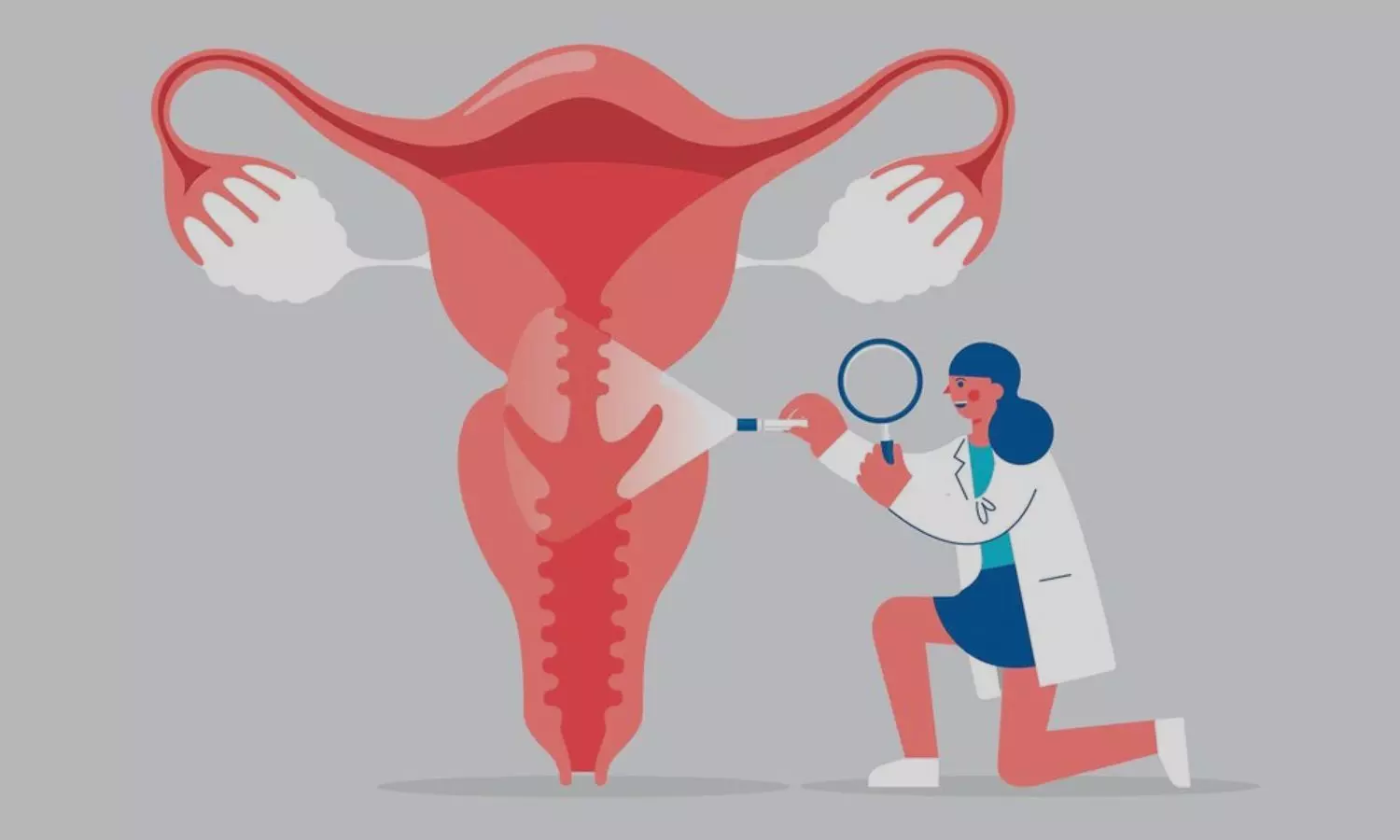DNA-Methylation for Risk-Stratification of Women at Colposcopy: A Cross-Sectional Study

Cervical cancer and its precursors are caused by high-risk human
papilloma virus (hrHPV). Early detection through screening is important as this
enables identification of women at increased risk of the disease who need
further examination. Colposcopy and the collection of cervical biopsies are
essential in the diagnostics of women with an abnormal screening test. However,
in postmenopausal women, the transformation zone (TZ) retracts into the
cervical canal, resulting in an incomplete visualisation of the TZ (TZ3), which
challenges the performance of colposcopy and increases the risk of missing
disease. In women with a TZ3, the detection rate of cervical intraepithelial
neoplasia grade 2 or worse (CIN2+) was reported to be two-fold higher in the
large loop excision of the transformation zone (LLETZ) specimen compared to
cervical biopsies, suggesting increased risk of missing disease. However,
performing a LLETZ in all screen-positive women with a TZ3 will result in a
significant risk of overtreatment and associated harm. Thus, it is important to
accurately identify women who have an increased risk of CIN2+ to ensure timely
treatment.
Cytology has been widely used for triage of hrHPV-positive
women in screening; however, the sensitivity of cytology declines with age and
is often suboptimal in older women. P16/Ki67 dual-stain testing (DS) has shown
promising results. Nevertheless, P16/Ki67 DS is a subjective method that relies
on the level of training and experience of the evaluator. An objective marker
could be hrHPV genotyping as several studies have shown a marked difference in
risk of CIN2+ across genotypes. However, because the prevalence of HPV16 and 18
in cervical cancer declines with age there is a need to identify other
objective markers for risk stratification.
One such biomarker could be host-cell DNA hypermethylation.
Multiple studies have shown that DNA methylation testing can be used for triage
of hrHPV-screening-positive women, while other studies have demonstrated a
higher likelihood of regression in women with CIN2/3 if there is no
hypermethylation. The previous studies on DNA methylation markers have mainly
focused on younger women, and so, there is limited evidence on the clinical
utility of host cell DNA methylation for risk stratification in older women at
the time of colposcopy. Knowledge on a woman’s immediate risk of disease is
important for clinical counselling and management. Thus, authors aimed to
investigate the clinical utility of various host-cell DNA methylation markers
for detection of CIN2+ and CIN3+ in women with a TZ3 at colposcopy.
It was a Cross-sectional study. Population included Women
≥45 years with a TZ3 at colposcopy. Participants referred for colposcopy due to
an abnormal cervical screening test underwent cervical cytology sampling,
biopsies and a large loop excision of the transformation zone (LLETZ). Cytology
samples were analysed for DNA methylation markers: FAM19A4/miR124-2,
ARID3C/ARL5C and METloc001/METloc002 according to the manufacturer’s
instructions. LLETZ histology was the reference standard.
Among 89 women (median age: 67.9years), 31 (34.8%) had CIN2+
and 16 (18.0%) had CIN3+ detected.
Sensitivity for CIN2+ was similar across markers, ranging
from 74.2% (95% CI: 55.4–88.1) to 77.4% (95% CI: 58.9–90.4), while specificity
was lower for FAM19A4/miR124-2 (39.7%; 95% CI: 27.0–53.4) compared to
ARID3C/ARL5C (65.5%; 95% CI: 51.9–77.5) and METloc001/METloc002 (82.8%; 95% CI:
70.6–91.4).
Sensitivity for CIN3+ was slightly lower for
FAM19A4/miR124-2 (75.0%; 95% CI: 47.6–92.7) compared to ARID3C/ARL3C (87.5%;
95% CI: 61.7–98.4) and METloc001/METloc002 (93.8%; 95% CI: 69.8–99.8).
In this study, authors examined the utility of methylation
markers for CIN2+ detection in screen-positive older women with a TZ3 at
colposcopy. They found that the sensitivity of CIN2+ detection was high and similar
across methylation markers. In contrast, the specificity was higher for
METloc001/METloc002 (85.8%) compared to ARID3C/ARL5C (65.5%) and
FAM19A4/mir124-2 (39.7%). Similar findings were observed for CIN3+. These
findings may suggest that some methylation markers may be useful to identify
screen-positive women with a TZ3 who are at increased risk of CIN2+ and CIN3+.
Host-cell DNA methylation markers, particularly
METloc001/METloc002, may be a promising tool for risk stratification of women
with a TZ3 at colposcopy, suggesting that women who are negative can safely
abstain from immediate LLETZ due to low risk of CIN2+ and CIN3+.
Source: Karen Omann Binderup, Joachim Boers,
Line Winther Gustafson; BJOG: An International Journal of Obstetrics
& Gynaecology, 2025; 0:1–9 https://doi.org/10.1111/1471-0528.18288



